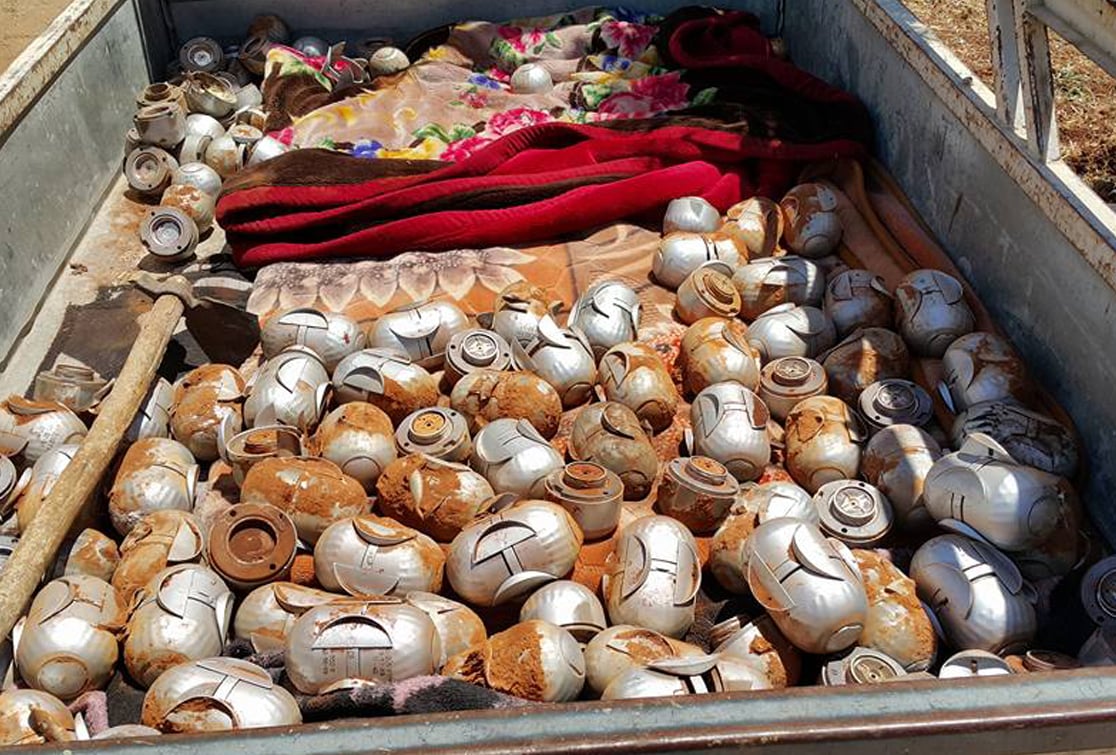
More nations support ban on cluster munitions, but civilians continue to suffer
(Geneva, 1 September 2016) – More states have joined the international treaty prohibiting cluster unitions over the past year, but in the small number of conflicts where the weapon is being used civilians are still being killed and maimed by these indiscriminate weapons, according to the annual report released today by the Cluster Munition Coalition at the United Nations (UN) in Geneva.
“More countries are endorsing the ban on cluster munition use enshrined in the Convention on Cluster Munitions,” said Mary Wareham of Human Rights Watch, ban policy editor of Cluster Munition Monitor 2016. “All countries concerned by the near-daily reports of cluster munition attacks in Syria should call for an immediate end to the use and encourage the users to embrace the international ban on these weapons.”
Since August 2015, five countries have ratified the Convention on Cluster Munitions (Colombia, Iceland, Palau, Rwanda, and Somalia), while Cuba and Mauritius acceded, bringing the total number of States Parties to 100. Last December, 139 states, including 33 non-signatories to the convention, adopted the first UN General Assembly resolution supporting the convention to be taken to a vote.
Despite international outcry, cluster munitions continued to be used in two countries. Cluster munition attacks in Syria have increased since Russia began its joint military operation with Syrian government forces at the end of September 2015; now there are almost daily reports of new cluster munition attacks. Between April 2015 and March 2016, a Saudi Arabia-led coalition of states used cluster munitions in at least 19 attacks in Yemen. None of these countries have signed the Convention on Cluster Munitions.
Civilians suffer most from cluster munition harm and accounted for 97% of cluster munition casualties in 2015, where such status could be determined. Most new cluster munition casualties in 2015 were recorded in Syria (248) and Yemen (104), primarily occurring during cluster munition strikes. New cluster munition casualties were also recorded in six other countries in 2015, most from unexploded submunitions left from attacks that took place many years earlier.
The Convention on Cluster Munitions, adopted on 30 May 2008, comprehensively prohibits cluster munitions, requires destruction of stockpiles within eight years, clearance of areas contaminated by cluster munition remnants within 10 years, and the provision of assistance for victims of the weapon.
Cluster munitions have been banned because of their widespread indiscriminate effect at the time of use, and the longlasting danger they pose to civilians once the conflict has ceased. Cluster munitions can be fired by artillery and rockets or dropped by aircraft, and open in the air to release multiple smaller bomblets or submunitions over an area the size of a football field. Submunitions often fail to explode on initial impact, leaving dangerous remnants that pose the same danger as landmines until cleared and destroyed.
“Countries are making progress in implementing the Convention on Cluster Munitions, as seen in their destruction of cluster munition stocks and clearance efforts to make contaminated land safe again,” said Jeff Abramson, coordinator of the Landmine and Cluster Munition Monitor initiative. “More resources and better use of existing ones are needed however, to ensure states make all areas safe and make good on obligations to survivors, family members of people injured and killed, as well communities affected by cluster munitions.”
Under the Convention on Cluster Munitions, 29 States Parties have completed the destruction of nearly 1.4 million stockpiled cluster munitions containing 172 million submunitions. This represents the destruction of 93% of all cluster munitions and 97% of all submunitions declared as stockpiled under the treaty.
During 2015, nine State Parties destroyed 79,000 cluster munitions and 8.7 million submunitions. Germany, Italy, Japan, Mozambique, and Sweden completed stockpile destruction in 2015, while France did so in June 2016.
Conflict and insecurity made clearance of cluster munitions more challenging in several countries, but in 2015 at least 70 km2 of contaminated land was cleared resulting in the destruction of 120,000 submunitions.
At least 24 states and three other areas remain contaminated by cluster munitions. It is unclear whether five additional states are contaminated. Given current efforts, only three State Parties are judged to be on track to meet their mandated 10-year clearance deadlines.
Countries with obligations to improve the assistance accessible to cluster munition victims boosted their commitments to addressing victims’ rights when they adopted a five-year action plan at the convention’s First Review Conference in September 2015 in Dubrovnik, Croatia. The 14 States Parties with cluster munition victims, and national victims’ organizations, face serious challenges because international resources made available for them do not measure up to the promise of adequate assistance.


